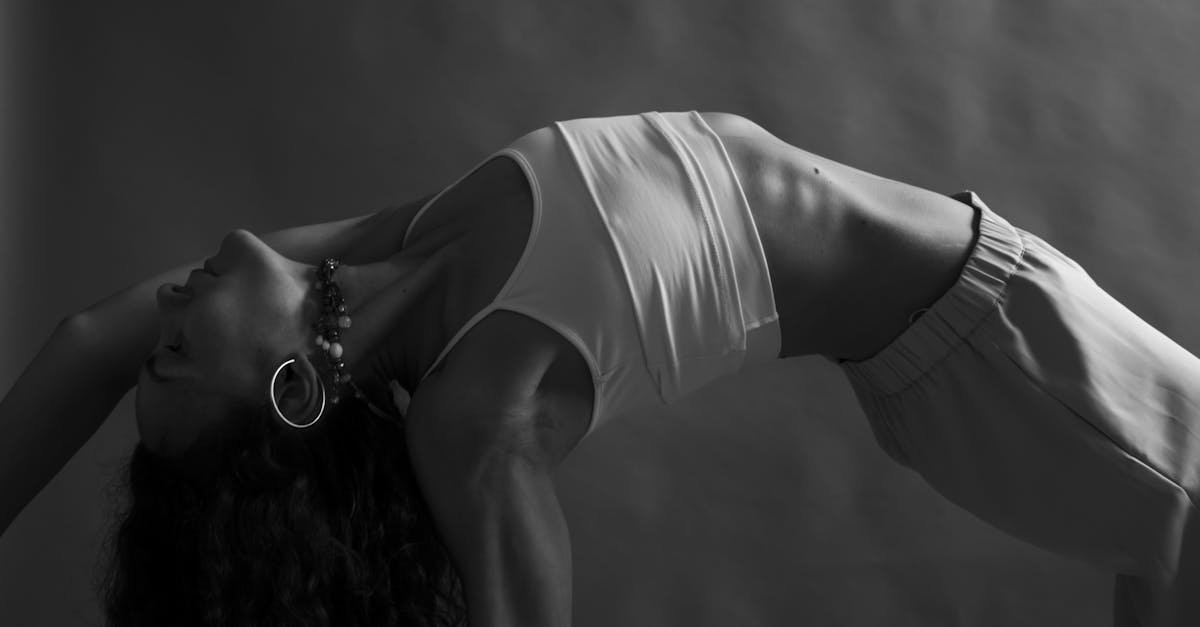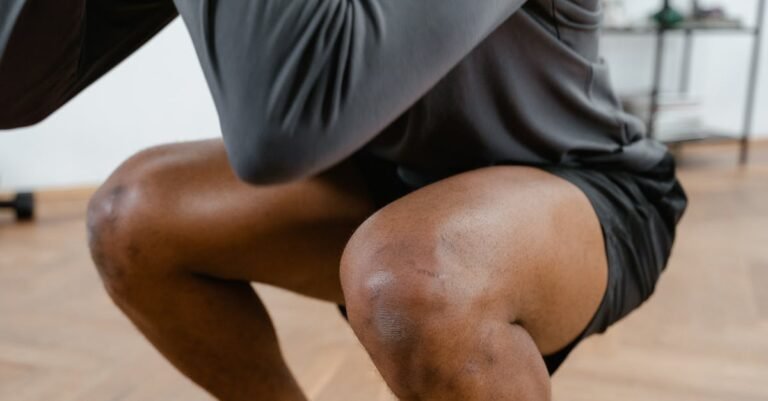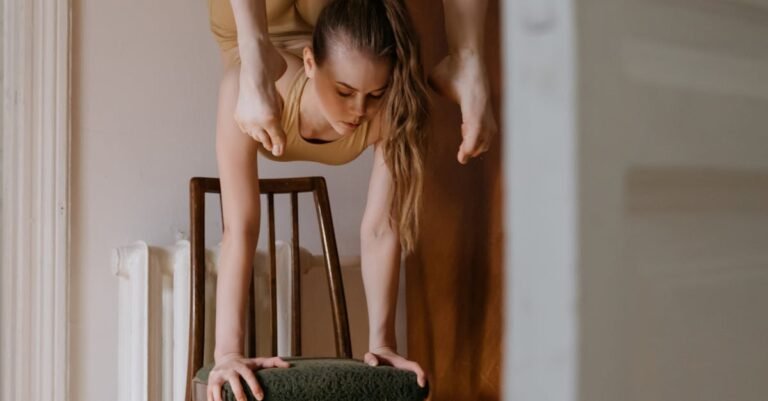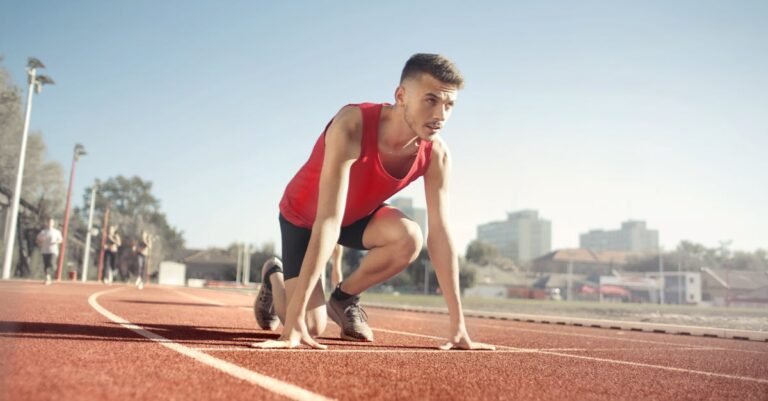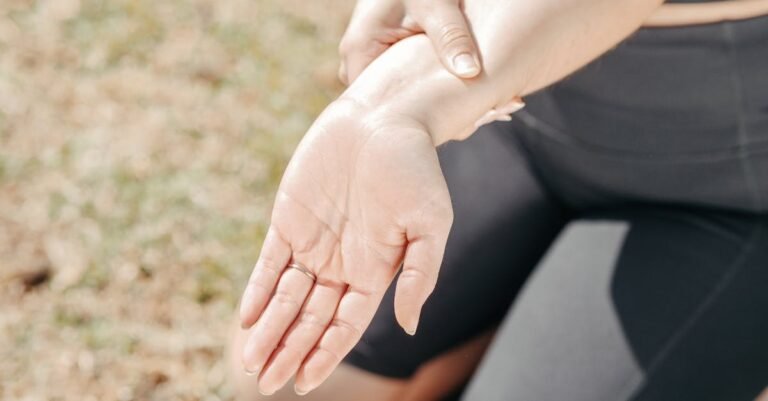Table of Content
- Balance Exercises To Improve Stability: Stand Tall and Confident
- Why is Balance So Darn Important Anyway?
- Understanding the Systems Behind Your Stability
- Getting Started: Safety First!
- Beginner Balance Boosters
- Intermediate Stability Challenges
- Advanced Balance Builders
- Incorporating Balance into Your Routine
- Conclusion: Stepping Forward with Confidence
- Frequently Asked Questions (FAQs)
Balance Exercises To Improve Stability: Stand Tall and Confident
Ever felt that little wobble when reaching for something on a high shelf? Or maybe you’ve noticed navigating uneven sidewalks feels a bit more precarious than it used to? You’re not alone! Maintaining good balance is crucial for navigating our world safely and confidently, yet it’s something many of us take for granted until it starts to fade. But here’s the good news: like any other physical skill, balance can be improved with practice. Think of it like tuning an instrument; your body needs regular adjustments to stay pitch perfect.
Improving your stability isn’t just about preventing falls (though that’s a massive benefit, especially as we age). It’s about enhancing your overall quality of life, boosting athletic performance, and allowing you to move through your day with greater ease and confidence. Ready to stop feeling shaky and start feeling solid? Let’s dive into the world of balance exercises and discover how you can build a stronger, more stable foundation, one step at a time.
Why is Balance So Darn Important Anyway?
So, we talk about balance, but why is it such a big deal? Isn’t it just about not tipping over? Well, yes and no. While preventing falls is definitely a key outcome, the importance of good balance runs much deeper than just staying upright.
Beyond Just Not Falling Over
Think about all the things you do without even consciously considering your balance. Walking, running, climbing stairs, carrying groceries, playing with kids or pets, even just getting dressed – they all require a constant, subtle interplay of systems working together to keep you stable. Good balance means:
- Improved Coordination: Your body learns to work more efficiently, making movements smoother and more controlled.
- Enhanced Athletic Performance: Whether you’re a weekend warrior or a seasoned athlete, stability is key for power, agility, and preventing sports related injuries. Think about a golfer’s swing, a basketball player’s jump shot, or a dancer’s pirouette – all require exceptional balance.
- Better Posture: The muscles responsible for balance often overlap with those supporting good posture. Strengthening them helps you stand taller and reduces strain on your spine.
- Increased Confidence: Feeling steady on your feet translates to greater confidence in your physical abilities and reduces the fear of movement, especially in challenging environments.
The Ripple Effect: How Poor Balance Affects Daily Life
Conversely, when balance starts to decline, it can create a cascade of negative effects. It’s not just the dramatic fall we worry about; it’s the subtle erosion of daily function. Poor balance can lead to:
- Fear of Falling: This fear can be paralyzing, causing people to limit their activities, stay home more often, and become less physically active overall. Ironically, this inactivity further weakens muscles and worsens balance, creating a vicious cycle.
- Reduced Independence: Difficulty with simple tasks like showering, cooking, or walking can significantly impact one’s ability to live independently.
- Increased Risk of Injury: Even minor stumbles can lead to sprains, strains, or fractures if your body can’t react quickly enough to regain stability.
- Slower Reaction Times: Balance training helps improve how quickly your body can sense and respond to unexpected shifts in position, crucial for avoiding hazards.
Essentially, good balance is a cornerstone of functional movement and independence. Investing time in improving it is investing in your long term health and freedom.
Understanding the Systems Behind Your Stability
Keeping you upright isn’t magic; it’s a complex collaboration between several sophisticated systems in your body. Think of it like a high tech stabilization system in a camera, constantly making micro adjustments. Let’s break down the main players:
The Vestibular System: Your Inner Ear’s GPS
Tucked away in your inner ear is the vestibular system, your body’s internal gyroscope. It contains tiny fluid filled canals and sensory organs that detect head movements – up, down, side to side, tilting. It tells your brain where your head is in space and how it’s moving. Ever feel dizzy after spinning around? That’s your vestibular system trying to recalibrate! Issues with this system (like inner ear infections or vertigo) can dramatically impact balance.
Proprioception: Your Body’s Sixth Sense
This might sound fancy, but proprioception is simply your body’s awareness of its own position and movement in space, without you having to look. Specialized nerve endings in your muscles, tendons, joints, and skin constantly send signals to your brain about joint angles, muscle tension, and limb position. It’s how you can touch your nose with your eyes closed or walk without staring at your feet. When you stand on one leg, proprioceptors in your standing foot and ankle are working overtime, sensing tiny sways and telling your muscles how to correct them instantly.
Vision: Seeing is Believing (and Balancing!)
Your eyes provide crucial information about your surroundings and your position relative to them. They help you spot potential hazards (like that rogue banana peel!) and give you reference points to maintain orientation. Have you ever noticed it’s much harder to balance with your eyes closed? That’s because you’ve taken away a major source of stabilizing input. Your brain relies heavily on visual cues to cross check the information coming from your vestibular and proprioceptive systems.
Musculoskeletal Strength: The Foundation
Even with perfect sensory input, you need the muscular strength and endurance to actually *make* the necessary adjustments. Key muscle groups involved in balance include:
- Core Muscles: Your abs, back, and pelvic muscles form a stable base for all movement. A strong core is like the sturdy trunk of a tree, keeping you grounded.
- Leg Muscles: Quads, hamstrings, glutes, and calf muscles work constantly to control shifts in your center of gravity over your base of support.
- Foot and Ankle Muscles: These small but mighty muscles make fine tuned adjustments to keep you stable, especially on uneven surfaces.
All these systems need to communicate effectively and work in harmony. Balance exercises help train this communication network, making the entire system more efficient and responsive.
Getting Started: Safety First!
Okay, you’re pumped to become a stability superstar! But before you start attempting one legged yoga poses on a balance ball, let’s talk safety. Like any form of exercise, it’s crucial to approach balance training mindfully to prevent injuries.
Creating a Safe Space
Preparation is key. When you’re practicing balance exercises, especially as a beginner:
- Clear the Area: Make sure you have ample space around you, free from clutter, furniture corners, pets, or anything else you could trip over or bump into if you lose your balance.
- Have Support Nearby: Stand near a sturdy chair, countertop, wall, or railing that you can lightly touch for support or grab onto if needed. The goal isn’t to lean heavily, but to have that safety net available. As you improve, you can rely on it less and less.
- Choose Appropriate Footwear: Start barefoot or in well fitting, flat shoes with good grip. Avoid loose slippers, high heels, or socks on slippery floors. Going barefoot can actually enhance proprioception as your feet have better contact with the ground.
- Focus and Minimize Distractions: Balance requires concentration. Try to practice in a quiet environment where you can focus on your body and the exercise.
When to Consult a Professional
While many people can safely start basic balance exercises on their own, there are times when seeking professional guidance is essential:
- History of Falls or Significant Balance Issues: If you fall frequently or feel very unsteady, see your doctor first to rule out any underlying medical conditions (like vision problems, inner ear issues, medication side effects, or neurological conditions).
- Dizziness or Vertigo: These symptoms need medical evaluation before starting a balance program.
- Recent Surgery or Injury: Especially involving the legs, hips, back, or head. Get clearance from your doctor or physical therapist.
- Chronic Health Conditions: Conditions like diabetes (which can cause neuropathy), arthritis, Parkinson’s disease, or stroke often require tailored exercise programs designed by a physical therapist or qualified trainer.
A physical therapist can assess your specific needs, identify weaknesses, and create a personalized, progressive balance program that is both safe and effective for you. Don’t hesitate to seek help – it’s the smart thing to do!
Beginner Balance Boosters
Ready to take your first steps towards better stability? These beginner friendly exercises are perfect for building a solid foundation. Remember to use that nearby support if needed!
Single Leg Stance: The Classic Starter
This is the quintessential balance exercise. It might seem simple, but it challenges your proprioception and ankle stability right away.
How to Do It Right
- Stand tall near your chosen support (wall, chair). Place your feet hip width apart, weight evenly distributed.
- Engage your core slightly – imagine gently pulling your belly button towards your spine. Keep your gaze fixed on a spot in front of you that isn’t moving.
- Slowly shift your weight onto one leg (let’s say the right leg).
- Lift your left foot off the floor, bending the knee. Keep the standing knee slightly bent, not locked.
- Try to hold this position for 10 15 seconds initially. Keep your hips level and avoid leaning your torso too much.
- Lower your foot slowly back to the starting position.
- Repeat on the other leg. Aim for 3 5 repetitions on each side.
Tip: If lifting your foot completely is too challenging, start by just lifting your heel, keeping your toes on the ground for support. As you get steadier, progress to lifting the whole foot.
Heel-to-Toe Walk: Walking the Line
Imagine you’re walking on a tightrope! This exercise narrows your base of support, forcing your body to make finer adjustments to stay balanced while moving.
Mastering the Walk
- Stand tall, ideally alongside a wall or countertop for light support if needed.
- Place the heel of one foot directly in front of the toes of the other foot, like you’re on a balance beam. Your feet should form a straight line.
- Choose a focal point in front of you to help maintain balance.
- Take a step forward, placing the heel of your stepping foot directly in front of the toes of your stationary foot.
- Continue walking forward in this heel to toe manner for about 10 15 steps.
- Keep your steps slow and controlled. Use your arms out to the side for balance if it helps.
- Turn around carefully and walk back to the start.
Tip: Focus on smooth, deliberate movements rather than rushing. If you feel wobbly, pause and regain your balance before taking the next step. Use the wall for light finger touch support as needed.
Practice these consistently, and you’ll start noticing improvements in your steadiness fairly quickly!
Intermediate Stability Challenges
Feeling more confident with the basics? Great! It’s time to level up. These intermediate exercises add complexity by incorporating movement or further challenging your center of gravity.
Tandem Stance with Arm Raises
This builds on the heel to toe position (tandem stance) by adding arm movements, which subtly shifts your weight and challenges your core stability.
- Stand in the heel to toe position (tandem stance), with the heel of your front foot touching the toes of your back foot. Choose whichever foot feels more comfortable in front initially. Stand near support if needed.
- Find your balance in this narrow stance. Engage your core and keep your gaze fixed ahead.
- Slowly raise both arms forward to shoulder height. Hold for a moment.
- Slowly lower your arms back down.
- Next, slowly raise both arms out to the sides to shoulder height. Hold briefly.
- Slowly lower them back down.
- Try raising both arms overhead. Hold.
- Lower them slowly.
- Aim to hold the tandem stance while performing 5 10 repetitions of each arm movement (forward, side, overhead).
- Switch which foot is in front and repeat.
Challenge: Once comfortable, try closing your eyes briefly during the stance (ensure support is very close by!) or performing slow torso twists while maintaining the stance.
Clock Reach (or Star Excursion)
This dynamic exercise improves single leg stability and control while reaching in different directions, mimicking real life movements.
- Stand on one leg (let’s start with the right) near your support. Keep a slight bend in the standing knee. Engage your core.
- Imagine you are standing in the center of a large clock face laid flat on the floor. 12 o’clock is directly in front of you, 6 o’clock is behind you, 3 o’clock is to your right, and 9 o’clock is to your left.
- Keeping your balance on the right leg, slowly reach your left foot forward and tap the floor lightly at the 12 o’clock position. Return to the center without putting your left foot down fully if possible.
- Now, reach and tap towards the 3 o’clock position (crossing slightly behind your standing leg might feel more natural for some directions). Return to center.
- Reach and tap towards the 6 o’clock position behind you. Return to center.
- Continue reaching and tapping towards different “hours” on the clock (e.g., 1, 2, 4, 5, 7, 8, 10, 11). You don’t have to hit every single number. Focus on control.
- Keep the movement controlled, avoiding jerky motions. Keep your standing knee bent and aligned over your foot (don’t let it collapse inwards).
- Complete one full “clock” cycle or a set number of reaches (e.g., 6 8 reaches) per leg.
- Switch legs and repeat.
Challenge: Increase the reach distance, try to hover your foot instead of tapping, or hold a light weight in the hand opposite your standing leg.
Advanced Balance Builders
Mastered the intermediate moves? If you’re feeling strong and stable, these advanced exercises will provide a significant challenge, further enhancing your strength, coordination, and reactive balance capabilities.
Single Leg Deadlift (Bodyweight)
This fantastic exercise builds strength in the hamstrings, glutes, and core while seriously challenging your single leg stability and proprioception.
- Stand on your right leg, keeping a slight bend in the knee. Your left foot should be hovering just off the floor behind you. Keep your core engaged and your back straight.
- Hinge forward at your hips, keeping your back flat (avoid rounding). As you hinge, extend your left leg straight back behind you for counterbalance. Think of your torso and back leg moving as one unit, like a seesaw.
- Lower your torso until it’s nearly parallel to the floor, or as far as you can maintain balance and good form. Reach your hands towards the floor or your shin.
- Keep your gaze slightly ahead and down to maintain a neutral spine. Feel the stretch in your right hamstring and the engagement in your right glute.
- Pause briefly at the bottom.
- Drive through your right heel and squeeze your right glute to return to the starting upright position in a controlled manner.
- Aim for 8 12 repetitions on one leg before switching to the other.
Important: Focus on form over depth. It’s better to do a shallower hinge with good balance and a flat back than to go deep and wobble or round your spine. Start with bodyweight only. Once mastered, you can hold light dumbbells.
Using Unstable Surfaces (Carefully!)
Introducing unstable surfaces forces your ankle and hip stabilizers to work much harder and improves your reactive balance.
Caution: Only attempt exercises on unstable surfaces once you have excellent balance on solid ground. Always have sturdy support nearby and start very conservatively.
Examples include:
- Pillow or Cushion: Start by simply standing on a firm pillow or folded towel, first with two feet, then progressing to single leg stances.
- Balance Disc (Wobble Cushion): These inflatable discs provide instability in multiple directions. Try two footed squats, then single leg stances.
- BOSU Ball: This half dome offers versatility. You can stand on the flat side or the dome side (dome side down is more challenging). Start with supported two footed balance, progressing to squats, lunges (with one foot on the BOSU), or single leg stances.
- Foam Pad: Thick foam balance pads offer a less aggressive instability than discs or BOSUs.
When using these tools:
- Start with basic static holds (like the single leg stance).
- Keep durations short initially (10 15 seconds).
- Focus intensely on engaging your core and making small ankle adjustments.
- Progress slowly to adding movement (like arm raises or small squats) only when static holds feel stable.
These advanced exercises demand focus and control. Listen to your body and don’t push too hard too soon.
Incorporating Balance into Your Routine
Okay, you’ve learned some great exercises, from beginner to advanced. But how do you actually weave them into your life so you see real, lasting results? Consistency is king!
Frequency and Duration
You don’t need hours upon hours to improve your balance. Short, frequent sessions are often more effective than one long, exhausting workout.
- Aim for Consistency: Try to practice your balance exercises at least 3 5 days per week. Daily practice, even for just 5 10 minutes, can yield excellent results.
- Integrate into Daily Life: Look for opportunities throughout your day. Try standing on one leg while brushing your teeth (near the counter!), doing heel raises while waiting for the kettle to boil, or practicing tandem stance while talking on the phone.
- Workout Integration: Add balance exercises as part of your warm up before other workouts, or dedicate a specific segment of your routine to stability training. They pair well with leg day or core workouts.
- Duration per Session: A dedicated session might last 10 20 minutes. Focus on quality over quantity. Perform 2 3 sets of your chosen exercises, holding static poses for 15 30 seconds (or longer as you improve) and performing 8 15 repetitions for dynamic movements.
Think of it like watering a plant; little and often is better than a huge flood once a month!
Listen to Your Body
This is perhaps the most crucial piece of advice. Your body sends signals – pay attention!
- Start Slowly: Especially if you’re new to exercise or have balance concerns. Begin with the easiest variations and gradually increase the difficulty, duration, or repetitions as you feel more stable.
- Don’t Push Through Pain: Discomfort or muscle fatigue is normal, but sharp pain is not. If an exercise hurts, stop or modify it.
- Fatigue Matters: Balance is often worse when you’re tired. Be extra cautious if practicing at the end of a long day or a strenuous workout. It might be better to do balance work when you’re fresh.
- It’s Okay to Regress: Some days you’ll feel steadier than others. If you’re having an off day, don’t be afraid to go back to an easier variation or use more support.
- Celebrate Small Wins: Notice when you can hold a stance longer, wobble less, or reach further. Acknowledging progress keeps you motivated!
By integrating balance work consistently and listening to your body’s feedback, you’ll build a strong, stable foundation that supports you in everything you do.
Conclusion: Stepping Forward with Confidence
Improving your balance isn’t just about avoiding falls; it’s about reclaiming and enhancing your ability to move through the world with confidence, grace, and independence. From the simple act of standing on one leg to more dynamic challenges, the exercises we’ve explored work by retraining that intricate network connecting your brain, inner ear, eyes, muscles, and nerves. It’s like upgrading your body’s internal operating system for better stability control.
Remember, progress takes time and consistency. Start where you are, prioritize safety, listen to your body, and celebrate every little improvement. Whether you incorporate these exercises into your daily routine, your workouts, or both, you’re investing in your long term health, mobility, and overall quality of life. So go ahead, stand tall, challenge your equilibrium (safely!), and step forward into a more stable and confident future. You’ve got this!
Frequently Asked Questions (FAQs)
1. How long does it take to see improvements in balance?
You might notice small improvements in steadiness within a few weeks of consistent practice (3 5 times per week). Significant changes often become apparent after 6 8 weeks. However, results vary depending on your starting point, consistency, the types of exercises performed, and any underlying health conditions.
2. Can I do balance exercises if I have arthritis in my knees or hips?
Yes, often you can, and it can even be beneficial! However, it’s crucial to choose exercises that don’t aggravate your joint pain. Focus on gentle movements, maintain slight bends in the knees, and avoid locking joints. Exercises like supported single leg stances or heel to toe walks might be suitable. Always consult your doctor or a physical therapist first to get personalized recommendations and modifications.
3. Do I need any special equipment for balance exercises?
Not necessarily! Many highly effective balance exercises, like single leg stances, tandem walks, and clock reaches, require no equipment at all. You just need a safe space and perhaps a sturdy object for support. Unstable surfaces like foam pads, balance discs, or BOSU balls can be added later for an extra challenge, but they aren’t essential to get started.
4. Is it better to do balance exercises with shoes on or off?
Practicing barefoot can often be more beneficial. It allows the nerves in your feet (proprioceptors) to better sense the ground, providing more feedback to your brain for balance adjustments. It also helps strengthen the small muscles within your feet. However, if you have foot pain or require orthotics, wearing supportive, well fitting shoes is a better option. Safety and comfort are key.
5. Can balance training help prevent falls in older adults?
Absolutely! Numerous studies show that balance training is one of the most effective interventions for reducing the risk of falls in older adults. By improving stability, reaction time, coordination, and leg strength, these exercises help seniors stay steadier on their feet and better recover from unexpected trips or stumbles.

